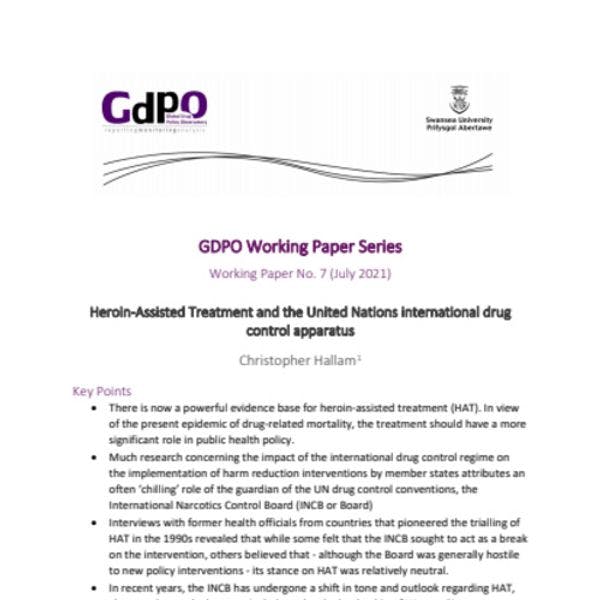Le traitement à base d’héroïne et le régime international de contrôle des drogues des Nations Unies
5 août 2021
Christopher Hallam
Global Drug Policy Observatory (GDPO)
Christopher Hallam (GDPO) plaide pour un soutien accru au traitement à base d’héroïne (TAH) par les gouvernements nationaux et les organismes internationaux, notamment l’OICS. Pour en savoir plus, en anglais, veuillez lire les informations ci-dessous.
Key Points
- There is now a powerful evidence base for heroin-assisted treatment (HAT). In view of the present epidemic of drug-related mortality, the treatment should have a more significant role in public health policy.
- Much research concerning the impact of the international drug control regime on the implementation of harm reduction interventions by member states attributes an often ‘chilling’ role of the guardian of the UN drug control conventions, the International Narcotics Control Board (INCB or Board) • Interviews with former health officials from countries that pioneered the trialling of HAT in the 1990s revealed that while some felt that the INCB sought to act as a break on the intervention, others believed that - although the Board was generally hostile to new policy interventions - its stance on HAT was relatively neutral.
- In recent years, the INCB has undergone a shift in tone and outlook regarding HAT, changes that took place particularly under the leadership of Werner Sipp.
- However, the UN drug control system, including the World Health Organisation, has in general been lukewarm at best in its support for HAT.
- The most realistic and promising appraisal of HAT came in the UN System Report of 2019, which directly backed the use of HAT.
- The INCB has clearly long been hostile to drug policy innovation and has carried this over into its attitudes to HAT. Yet, while the influence of the Board is complex, it is likely that national governments themselves are the main source of reluctance in making use of this intervention.
